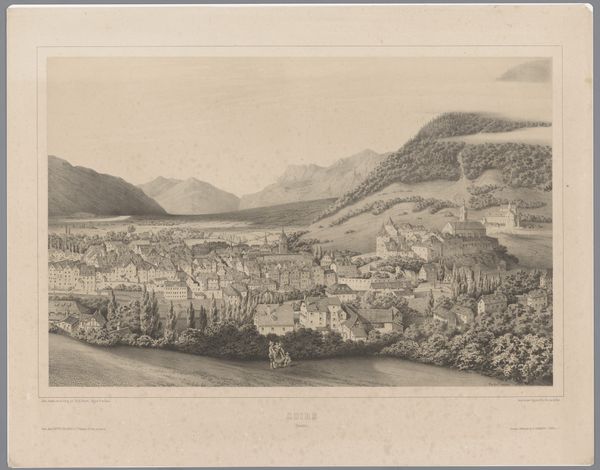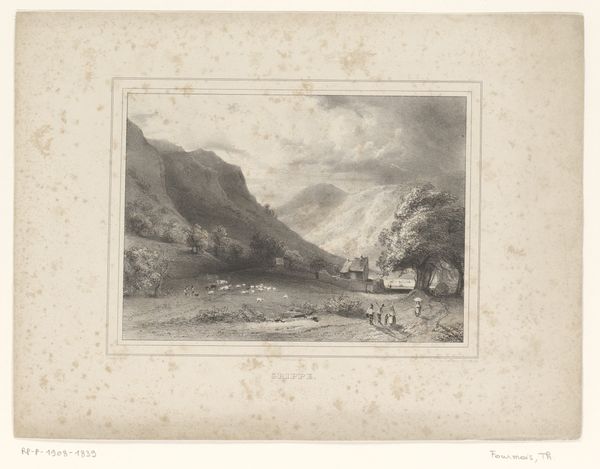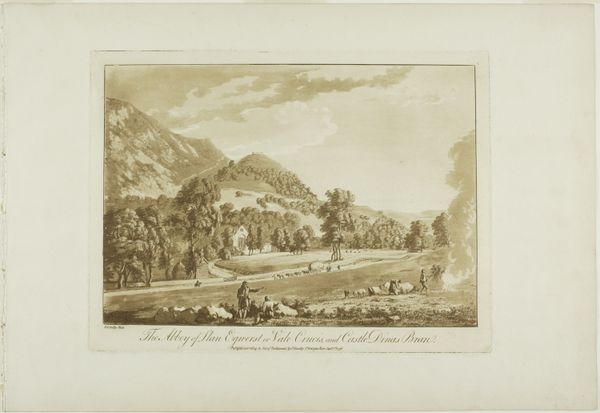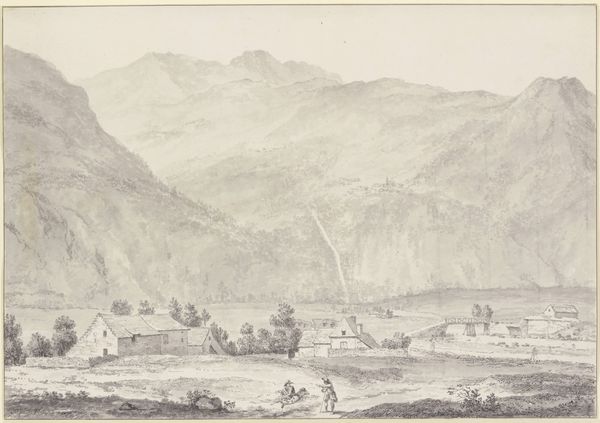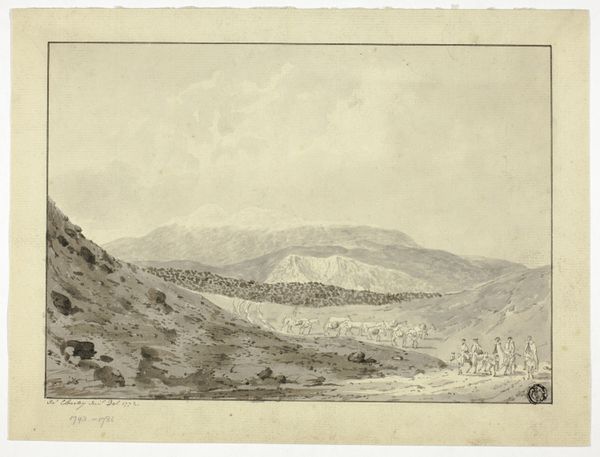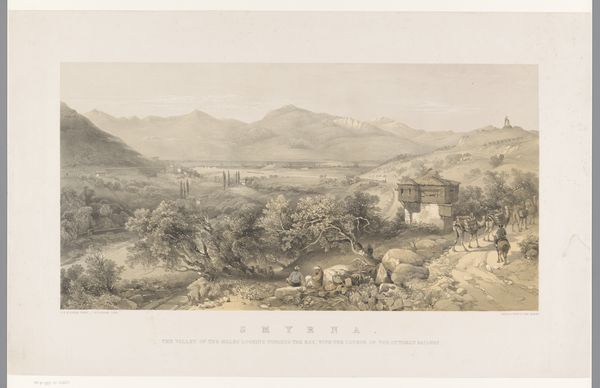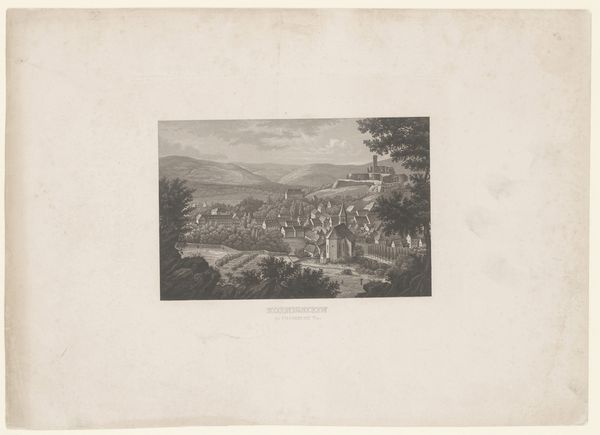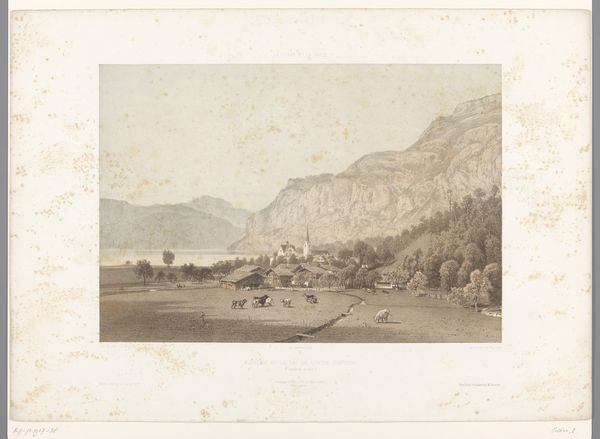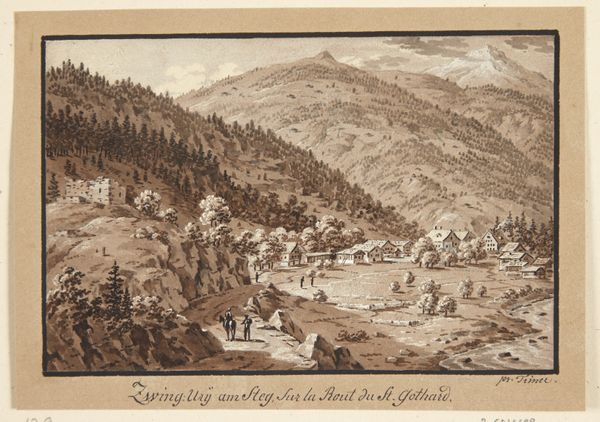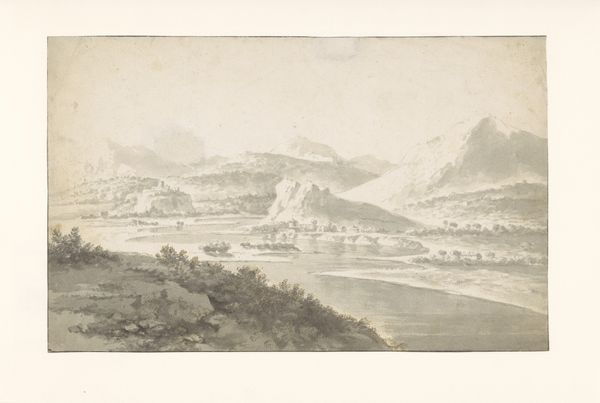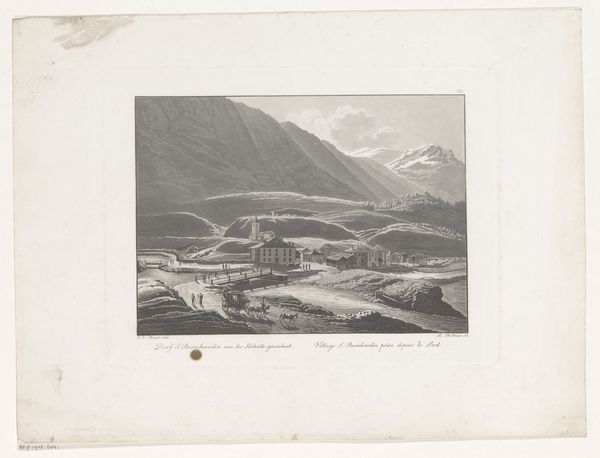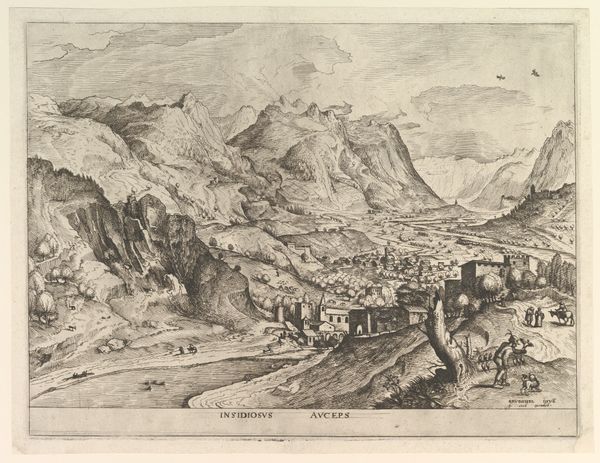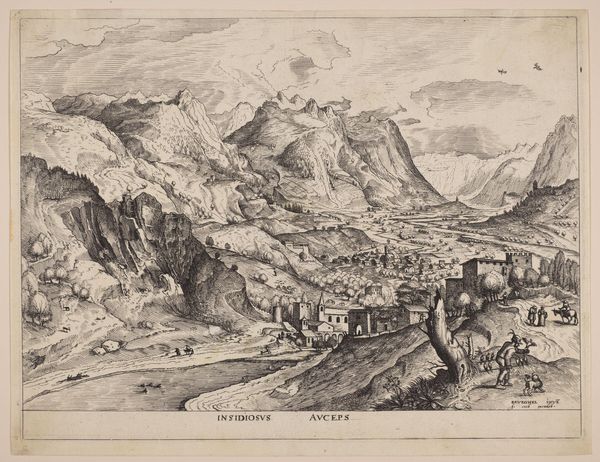
drawing, print, etching, paper
drawing
neoclacissism
etching
landscape
paper
mountain
Dimensions: height 247 mm, width 369 mm
Copyright: Rijks Museum: Open Domain
Curator: Oh, my first thought? Peaceful, and slightly intimidating. The looming mountain against the small human figures... it makes you feel the vastness of nature. Editor: Indeed! We're looking at "Gezicht op Leukerbad," or "View of Leukerbad," an etching on paper from sometime between 1780 and 1786. The artist is Etienne Fessard. It depicts Leukerbad, a town nestled in the Swiss Alps, quite a popular destination even then for its thermal baths. Curator: Baths, eh? Maybe those two folks in the foreground are thinking about a nice soak! But, seriously, there’s something incredibly serene about the detail. It's a kind of hyperrealism before its time. Every little house and tree is carefully rendered. Editor: That attention to detail is part of the Neoclassical movement—a focus on clarity, order, and a sense of the ideal within realistic settings. Prints like this had a practical purpose: they circulated imagery and knowledge of European landscapes, shaping perceptions of these places and encouraging tourism among the elite. It created this kind of desire to perform and witness these majestic places and perform one’s own status. Curator: Almost like an early postcard, wouldn't you say? I wonder how accurate it is. Maybe Fessard prettied up the place a bit. Editor: Possibly. He would have undoubtedly been selective about what elements to emphasize. Prints offered artists some level of autonomy since one original drawing could lead to a whole series of dissemination, bringing recognition beyond just one gallery, for instance. That speaks to shifts happening in the public role of art, which became less centralized as new possibilities emerged, which a view of a place for mineral baths really gets to. Curator: It’s strange to think this was made partly to draw crowds, but in doing so, immortalized Leukerbad. All this time later, here we are still admiring it, too. It still sparks that wanderlust feeling. I feel it… do you feel it? Editor: I do! Knowing its historical context gives me another layer to understand how such imagery played an active role in tourism industries and what desires it spoke to, which resonates even now.
Comments
No comments
Be the first to comment and join the conversation on the ultimate creative platform.
